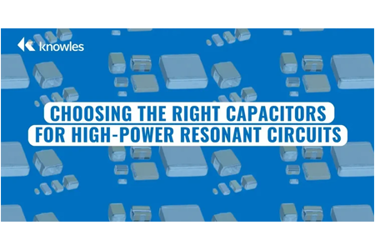Choosing The Right Capacitors For High-Power Resonant Circuits

The performance of an LC tank circuit is heavily influenced by the choice of capacitor, particularly regarding temperature stability, equivalent series resistance (ESR), and physical construction. Class I ceramic capacitors, such as C0G and NP0, are widely used due to their exceptional stability across temperature ranges. These capacitors exhibit minimal capacitance change—around ±30 ppm/°C—from -55 °C to 125 °C, making them ideal for applications requiring precision and predictable performance over varying environmental conditions.
Class II dielectrics, such as X7R, offer higher dielectric constants, enabling larger capacitance values in smaller packages. However, they are more sensitive to temperature fluctuations and applied bias voltage, resulting in less predictable behavior. While Class II capacitors are suitable for applications where higher capacitance is needed and slight variation is tolerable, Class I types are generally preferred in resonant circuits where stability and low ESR are critical.
Heat management is another important consideration. Capacitors with higher ESR dissipate more power as heat, which can degrade long-term reliability. Larger case sizes and optimized electrode construction can improve thermal handling, allowing the capacitor to operate safely at higher currents. In cases where high capacitance and high power are both required, custom capacitor assemblies may be necessary.
Knowles provides a broad portfolio of capacitors to address diverse energy storage and resonant circuit requirements, including solutions optimized for temperature stability, low ESR, and high-power operation. Careful component selection ensures precise, reliable, and long-lasting performance in LC tank applications.
Get unlimited access to:
Enter your credentials below to log in. Not yet a member of Wireless Design Online? Subscribe today.
